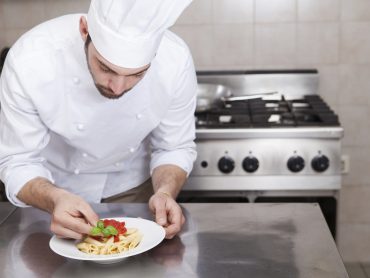In Vino Veritas LII – Look to the Loire
As a wine producer, France is so much more than Bordeaux and Burgundy – its two most prestigious growing regions and perhaps the only two that most people can name offhand. Wherever you can harvest grapes, the French are already doing just that, and there are many fantastic hidden gems (sometimes at bargain prices) waiting for you and your guests to discover, thereby helping increase meal satisfaction and revenue per table.
From a North American perspective, the Loire Valley isn’t terribly well-known. While your patrons yearn for a bit of education to enrich their dining experiences, they don’t want to be force-fed a lecture. As such, when introducing an appellation, varietal, winemaking process or anything else from the vintner’s glossary of terms, start simple then expand only when prompted. What I’ve previously alluded to as a wine or growing region’s USP (unique sales proposition), the one for the Loire would sound something along the lines of, “A growing region in Northwestern France that happens to be the birthplace of Sauvignon Blanc.”
While the appellations around the Loire River are also the place of origin for Cabernet Franc, Chenin Blanc and Muscadet, everyone has at least a vague concept of sauvignon blanc so the above sentence is easily digestible. As a northern region about two-thirds the size of Bordeaux and covering a vast swath of geography from the Atlantic through to the heart of the country, the summers are shorter and the climate is far from Mediterranean in composition, meaning that the taste profiles for the end product are substantially different.
Whereas the wines from Languedoc, Provence or even into Spain and Italy are renowned for their thick and pungent ‘Old World’ flavors, Loire bottles tend to have a more muted, low sugar and low acid palate – a direct reflection of the climate and terroir. Nowhere is this more apparent than the citrusy yet highly subdued sauvignon blancs from the better-known appellations of Pouilly-Fumé and Sancerre. But this light-bodied quality extends to the pinot noirs, rosés and cabernet francs made further down the river.
Unlike, for instance, Burgundy where the region is dominated by one grape for red and one for white, the Loire Valley has a diverse range of single varietals in use. In order to get people interested and to sell a few more glasses in the process, though, look to what is exceptional.
The sauvignon blancs from the Upper Loire are bar none the best in the world, so if you put one or two on the list, the argument for their purchase is easy. Likewise, cabernet francs from this part of the globe, especially the centrally situated Chinon appellation, are irreplaceable while Muscadet and their Melon de Bourgogne grapes are as unique as they come.
The same cannot be said, however, for sparkling whites from Saumur or Vouvray, which, although made from the rarer chinon blanc grape, must compete for name recognition with the likes of champagne and prosecco. Thus, unless your restaurant is called ‘Bubbles’ and specializes in the full range of these crude, dry, semisweet and sweet doubly fermented elixirs, stick to the brands with more ingrained awareness and leave the Loire to its most special of specialties.
(Article published by Larry Mogelonsky in Hotels Magazine on November 22, 2016).




